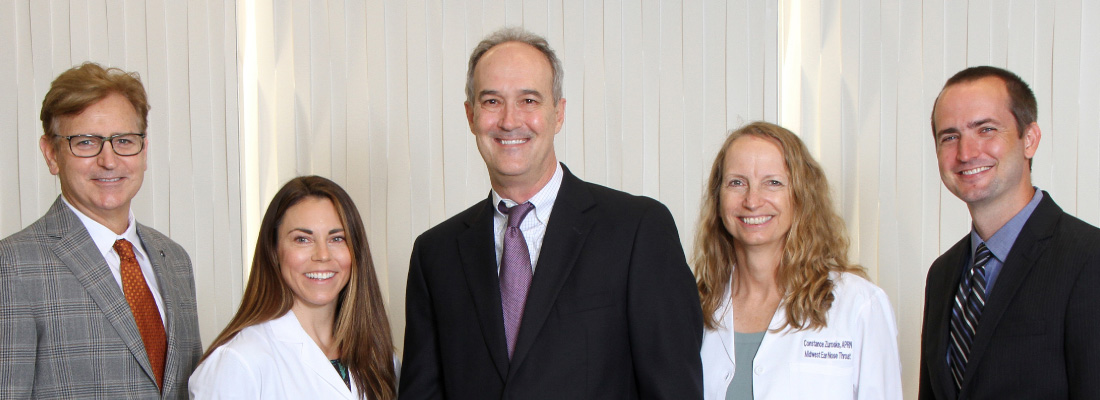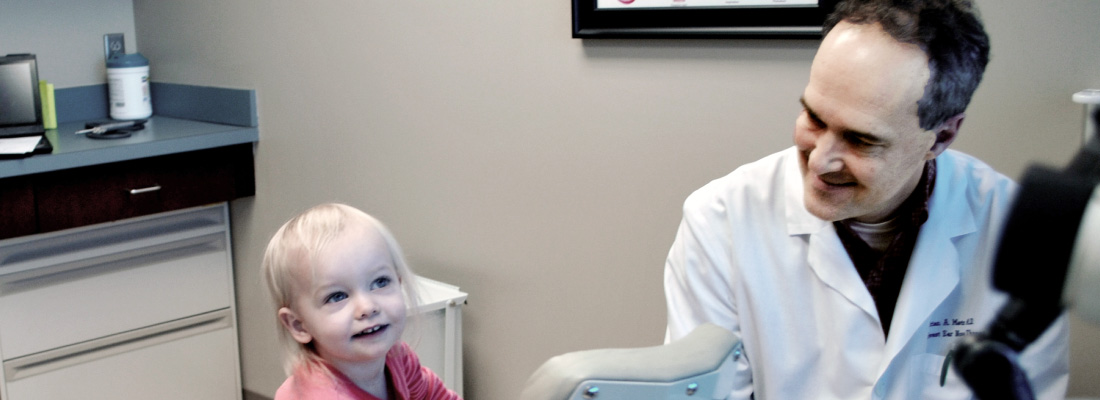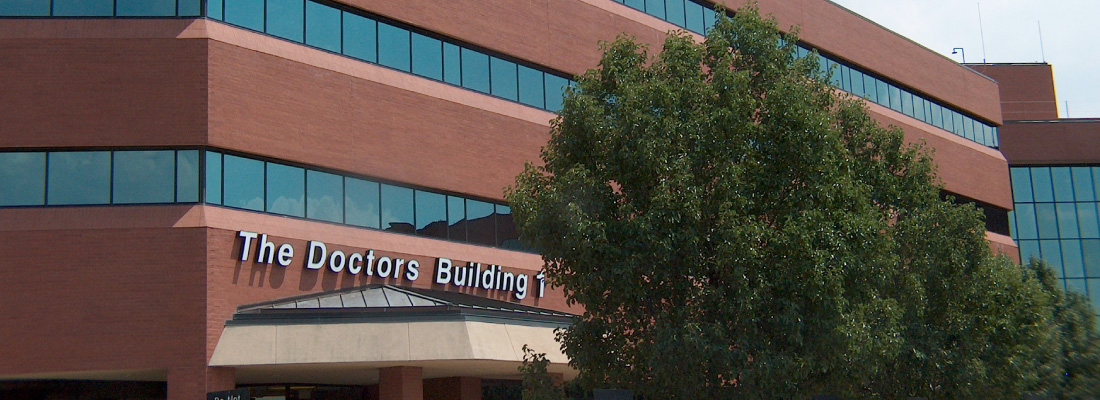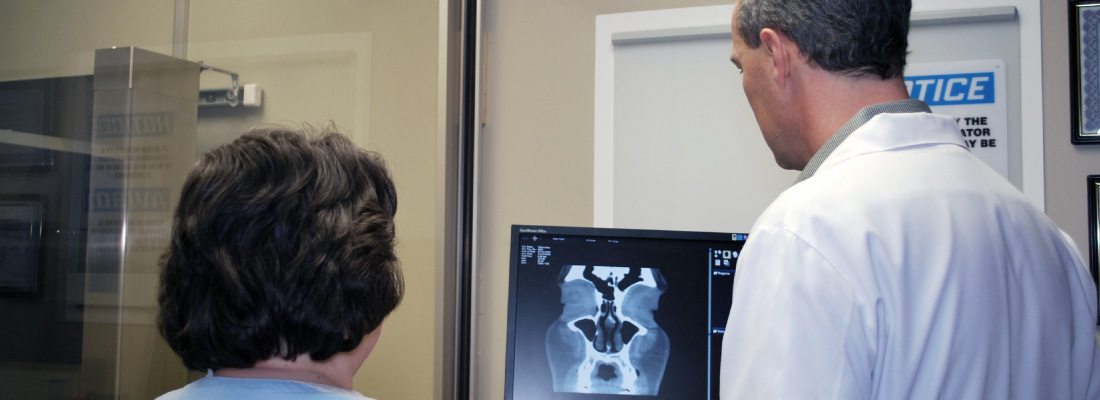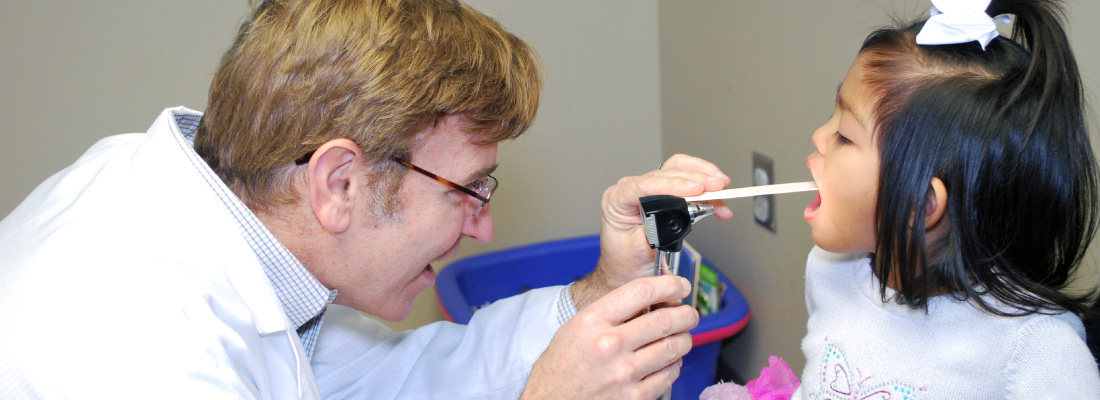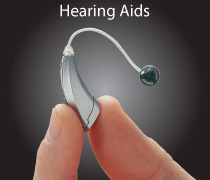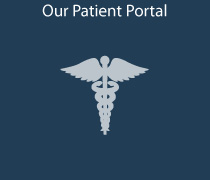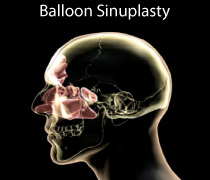Bell’s Palsy
The facial nerve controls the muscles of your face, ears, the saliva glands in your mouth, as well as the tears in your eyes, and provides some of the sense of taste on your tongue. Bell’s palsy occurs when the facial nerve is damaged by pressure or swelling and does not work properly, resulting in paralysis (weakness) and distortions of the face. Typically, a patient with Bell’s palsy wakes up feeling normal, but is shocked when they look in the mirror and sees how one side of the face has changed.
What Are the Symptoms of Bell’s Palsy?
Symptoms of Bell’s palsy may include:
- Facial drooping or paralysis
- Drooling or a hard time swallowing
- Incomplete eyelid closure, which may lead to dry eyes
- Facial numbness
- Pain around the ears
- Loss of the sense of taste
- Sense of facial heaviness
- Altered speech
What Causes Bell’s Palsy?
It is unknown what causes Bell's palsy, but it occurs when the facial nerve becomes injured, through no-known fault or action of the patient. The facial nerve is believed to have been squeezed or somehow swollen by an inflammation. We don’t know why the facial nerve becomes weak, or why some people are more affected than others. Some studies have found that Bell's palsy may be related to a virus, or it could be a response by your body’s immune system. It is more common in the 15- to 45-year-old age group. You are at increased risk for Bell’s if you are pregnant, have severe preeclampsia, are obese, have high blood pressure, are diabetic, or have upper respiratory ailments.
What Are the Treatment Options?
Several treatment options are available for Bell's palsy, and some patients will recover without seeking treatment. It is important, however, to seek medical attention to discuss a treatment plan and avoid misdiagnosis. Some people benefit from taking prescribed oral steroids, and it may help to get this treatment as soon as possible after the onset of facial weakness.
Your primary care provider, or ENT (ear, nose, and throat) specialist, or otolaryngologist, may prescribe antiviral drugs in addition to oral steroids. Other experimental treatments may include electronic nerve stimulation, electroneurography, hyperbaric therapy, or acupuncture. There is conflicting evidence about how well some surgical and experimental treatments work. Talk with your doctor about risks and potential side effects with any treatment.
One very important treatment consideration involves proper care of the eye if a paralyzed eyelid does not allow the lid to close. If the eye is left open, it dries out, which can injure the eye and lead to permanent vision loss. It is very important to moisten the eye by using eye ointment or eye drops. Wearing an eye patch or taping the eye shut may be other treatments recommended by your doctor, and referral to an eye doctor, or ophthalmologist, may be necessary.
Most patients recover at least to some degree. Studies show that facial function is completely restored in about 70 percent of Bell’s palsy patients who have complete paralysis within six months, and as high as 94 percent of patients who have partial paralysis. Some patients recover quickly, and some patients may have some degree of long lasting paralysis.
If your condition does not improve over time, there are some procedures that can help reduce the effects of Bell’s palsy. You should follow up with your doctor if your symptoms do not get better within three months, or if symptoms get worse. In some instances, patients withdraw socially due to cosmetic changes and may require psychologic support. That’s why it’s also very important that you monitor your mental health, and seek counseling or support if you feel overwhelmed by the way your face has changed. Websites that share Bell’s palsy patient stories and pictures may also provide support.
What Questions Should I Ask My Doctor?
- At what point should I see an eye doctor?
- If I don’t get better after an initial treatment with steroids, when should I consider further treatment or more steroids?
- Do antiviral therapies really work for Bell’s palsy?
- Are any tests available to predict recovery or outcome from Bell’s palsy?
Asthma
Asthma is a very common condition of the lungs; about 25 million Americans experience it. During regular breathing with asthma, the passages within the lungs can become narrow and cause noisy breathing and shortness of breath. This condition can be brought on or worsened by activity, exercise, cold weather, or allergies. In fact, having allergies many times can go hand-in-hand with having asthma.
Your primary care physician should be very familiar with the signs and symptoms of asthma. The most important part of helping your doctor make a correct diagnosis is discussing your symptoms and how long they have been present. It is also important to talk about what makes your breathing symptoms better or worse, and when they occur.
What Are the Symptoms of Asthma?
Common symptoms of asthma include:
- Wheezing (high-pitched) sound when breathing
- Shortness of breath
- Cough
- Tightness in the chest
- Pain in the chest
What Causes Asthma?
Asthma is a chronic condition that can run in families. In younger patients, asthma can be caused by allergies that develop into a chronic (long term) inflammation of the lungs. In adults, asthma can be seen in patients with sinusitis or nasal polyps. The exact cause is unknown but once someone has asthma, viruses like the common cold can trigger an asthma attack. Environmental irritants, like pollen, molds, animal dander, dust, strong odors, and tobacco smoke, can affect children or adults with asthma. During an asthma attack, it may be difficult to catch your breath, especially if you’re very active. You may also feel tightness or pain in your chest. In asthmatics, these symptoms are reversible with medication.
What Are the Treatment Options?
Patients with asthma commonly go to their primary care physician or the emergency room with breathing issues. It’s important to make sure that the cause of the breathing problem is actually asthma and not from another condition. Children or adults with asthma may end up seeing a lung specialist, or pulmonologist, to help control their symptoms. They may also be tested for allergies.
Special pulmonary function tests can be performed to check your lungs and how they respond to inhalers that help open the passages. A chest X-ray may also be ordered to check your lungs, heart, and air passages. Chest X-rays are common, quick, and use low doses of radiation.
Treatment for asthma is designed to decrease inflammation and swelling in the lung passages. Often, patients start with inhalers, which are handheld devices that puff medication into your lungs through your mouth. Different types of inhalers are used, such as ones containing steroids to decrease inflammation, or inhaled medications that work on the muscles that open the airways. Some of these inhalers are used daily, and some are used as “rescue” inhalers for quick relief.
When inhalers do not fully control symptoms, oral pills can be helpful. Pills work to decrease inflammation, fight infection, or help open the passages to the lungs. The use of inhalers and pills depend on how often breathing symptoms occur and how severe they are.
One of the most important parts of treating asthma is avoiding things that make asthma worsen. This includes avoiding pollen, staying out of cold air, and keeping the house clean and free of dust. Paying close attention to what triggers your breathing issues can help identify what makes your asthma worse. Take note of your symptoms and when they occur to help your doctor make an accurate diagnosis.
Finally, it’s important to stay healthy and exercise, because conditions like being overweight and acid reflux can make asthma symptoms worse. Asthma as an adult or in your child can be a changing and challenging condition, and knowing about how to care for it is the best way to treat this condition.
What Questions Should I Ask My Doctor?
- Is asthma the cause of my breathing issues?
- What types of tests do I need to receive an accurate diagnosis?
- Do you recommend inhalers or medications for me? What are the potential side effects?
- Will this affect my other medical conditions and/or current medications?
- Do I have any restrictions to activities, exercises, or work?
- Could I have sinusitis?
- Should I see a specialist?
Aspiration
Aspiration is a medical term for accidentally inhaling your food or liquid through your vocal cords into your airway, instead of swallowing through your food pipe, or esophagus, and into your stomach. Once past the vocal folds, the food or drink enters your windpipe, or trachea, and can pass into your lungs. It happens sometimes to healthy people who have food “going down the wrong pipe” while swallowing. When this happens, a normal voice box, or larynx, and trachea sense the food or drink, which triggers a strong cough to clear the item from your windpipe and protect your lungs.
What Are the Symptoms of Aspiration?
When swallowing becomes difficult, or the sensation of your throat or voice box becomes impaired, anything that passes through your mouth can get into your lungs, even saliva, which is full of bacteria. Symptoms of aspiration may include:
- Strong coughing
- Choking while eating
- Pneumonia
- Trouble swallowing
- Stress while eating
- Weight loss
Again, aspiration is of great concern because it increases your risk of developing pneumonia.
What Causes Aspiration?
Aspiration can happen for many reasons and often should be looked at by an ENT (ear, nose, and throat) specialist, or otolaryngologist. If you have frequent coughing while eating or drinking, this is a sign you should see a doctor about swallowing problems. Given the possibility that aspiration might lead to pneumonia, finding it early is important. Sometimes when a stroke or other condition makes the vocal cords less sensitive, coughing may not be a signal that you are having difficulty swallowing, which can lead to silent aspiration.
What Are the Treatment Options?
Doctors often ask other healthcare providers such as speech-language pathologists (SLP) to help test swallowing problems. They may use a small camera placed through the nose to examine how food passes by the voice box into the esophagus during a swallow. Testing may also include a special X-ray video, called a modified barium swallow. This allows the SLP and doctor to watch the food pass through the entire swallowing activity from lips to esophagus. These tests may show what is wrong in the swallowing process, and help them figure out how to help you eat and drink safely.
Sometimes, simple diet changes are all that is needed to prevent aspiration. Other cases may need swallowing therapy. During therapy, exercises for swallowing strengthen and coordinate the muscles used in swallowing. Some swallowing problems may need surgery. Unfortunately, in certain situations, swallowing is so difficult or unsafe that a person cannot take in any food or drink by mouth. Then, interventions like a stomach feeding tube can supply food and fluids. In these situations, your doctor(s) and clinical team will work to help you find treatment(s) to regain a safe, effective swallow.
If you have any questions or concerns about suspected aspiration for you or a loved one, please find a nearby ENT specialist for consultation.
What Questions Should I Ask My Doctor?
- What is the difference between choking and aspiration?
- Do you know why I have difficulty swallowing?
- What are the tests for my swallowing problem?
- Did I get pneumonia from aspiration?
- What is the treatment for aspiration?
- What is the oral care regimen for people that aspirate?
- Do I need a feeding tube?
- What is swallowing therapy?
Aging and Swallowing
Swallowing is a complex process that changes over time, and swallowing difficulty (dysphagia) can be associated with aging. Changes in the tongue, upper throat (pharynx), vocal cords and voice box (larynx), and lower throat (esophagus) occur with aging. It has been estimated that more than 20 percent of individuals over the age of 50 experience dysphagia.1 Since the aging population is increasing, a significant number of individuals will experience changes in swallowing over time. By understanding normal, as well as abnormal, age-related changes, doctors and speech-language pathologists (SLPs) who specialize in swallowing disorders can better counsel patients, and target treatment strategies.
What Are the Symptoms of Swallowing Difficulty?
When you have difficulty swallowing, you may be experiencing one or more of the following symptoms:
- Difficulty chewing
- Increased effort to move food and liquids from the mouth into the upper throat (pharynx)
- Increased effort or resistance moving food from the upper throat (pharynx) into the lower throat (esophagus)
- Food getting stuck
- Pills getting stuck
- Regurgitation of food (can be right away with swallowing or delayed)
- Coughing and/or choking with eating and drinking
- Recurrent lung infections
- Weight loss due to food avoidance
What Causes Swallowing Difficulty?
Several issues can lead to swallowing difficulties, especially as people grow older, including:
- Missing teeth
- Dry mouth and throat
- Reduced tongue size and strength
- Reduced strength in the upper throat (pharynx)
- Reduced size and strength of the vocal cords and voice box (larynx)
- A longer, more dilated throat
- A narrower entrance into the lower throat (esophagus)
- Poor ability of the lower throat (esophagus) to move food into the stomach
- Overall increase in the time it takes for swallowing to occur
- Overall decrease in the feeling or sensitivity of the throat and voice box2
What Are the Treatment Options?
This website has numerous resources covering specific swallowing disorders, but when age-related changes alone are suspected, you can use these helpful strategies. Taking good care of your teeth and practicing good oral hygiene are excellent first steps. Ensuring that you chew your food completely and taking small bites and sips can help food move through the swallowing process. Make sure you hydrate properly, such as drinking water, when swallowing drier foods like bread or crackers. Minimizing the use of medications and drinks that dry your mouth and throat, such as coffee and other caffeinated beverages, can be helpful.
You may also consider working with a speech pathologist to learn strategies for eating properly and strengthening your throat using specific exercises. In some instances, further testing by your doctor or swallowing therapist may help identify underlying problems and individual treatment options.
What Questions Should I Ask My Doctor?
- How can I get my pills down more easily?
- I have trouble chewing my food. What can I do?
- Food gets stuck in my throat and is hard to get down. What can I do?
- Is coughing with swallowing okay?
- Since there is “normal aging” with swallowing, is it a problem?
References
1: Howden CW. Management of acid-related disorders in patients with dysphagia. Am J Med. 2004;117:44S-8.
2: Leonard RL and Shaker S. Effect of aging of the pharynx and UES. In: Principles of Deglutition. Eds: Shaker R, Belafsky PC, Postma GN, et al. Springer 2013.

